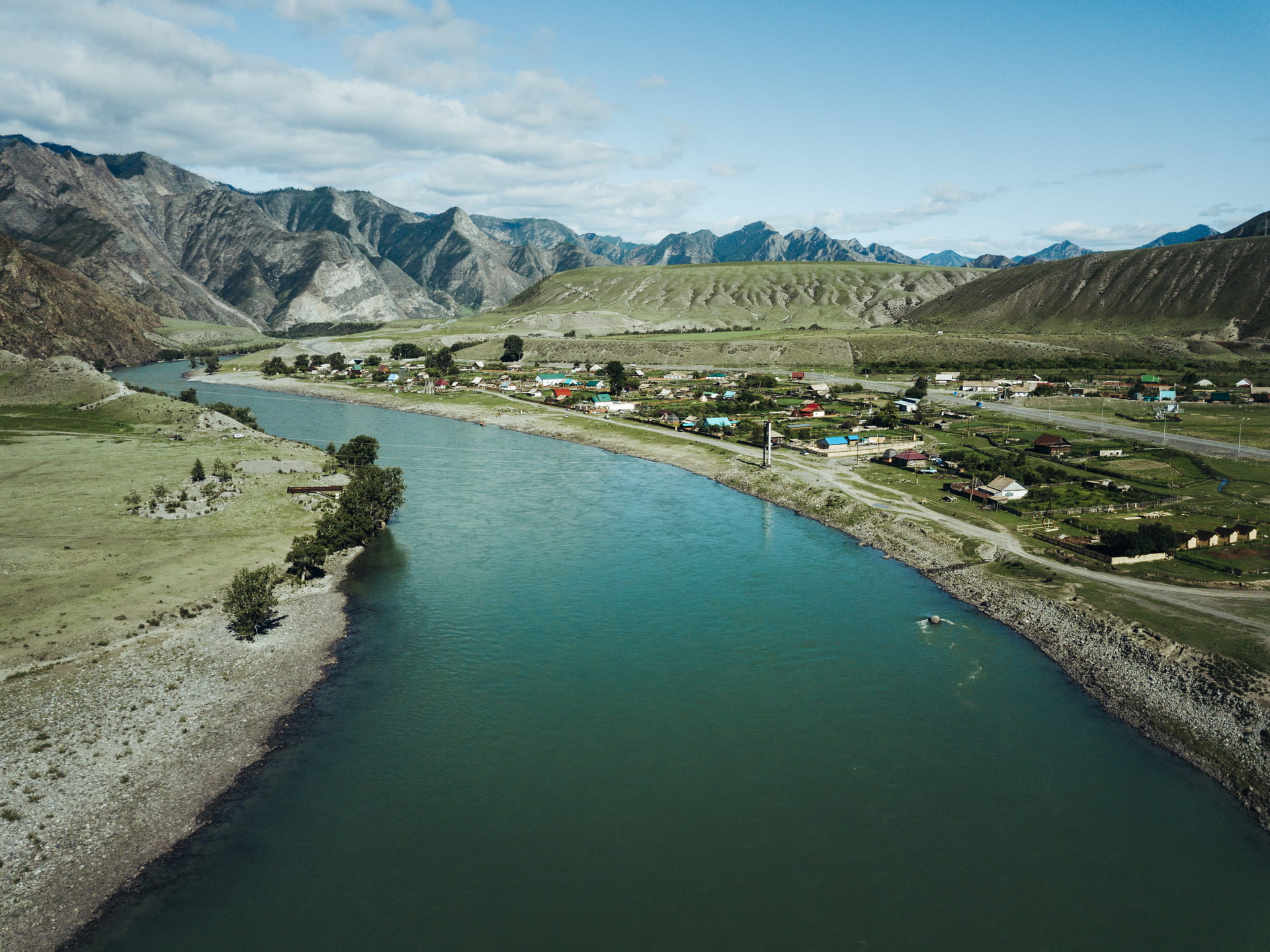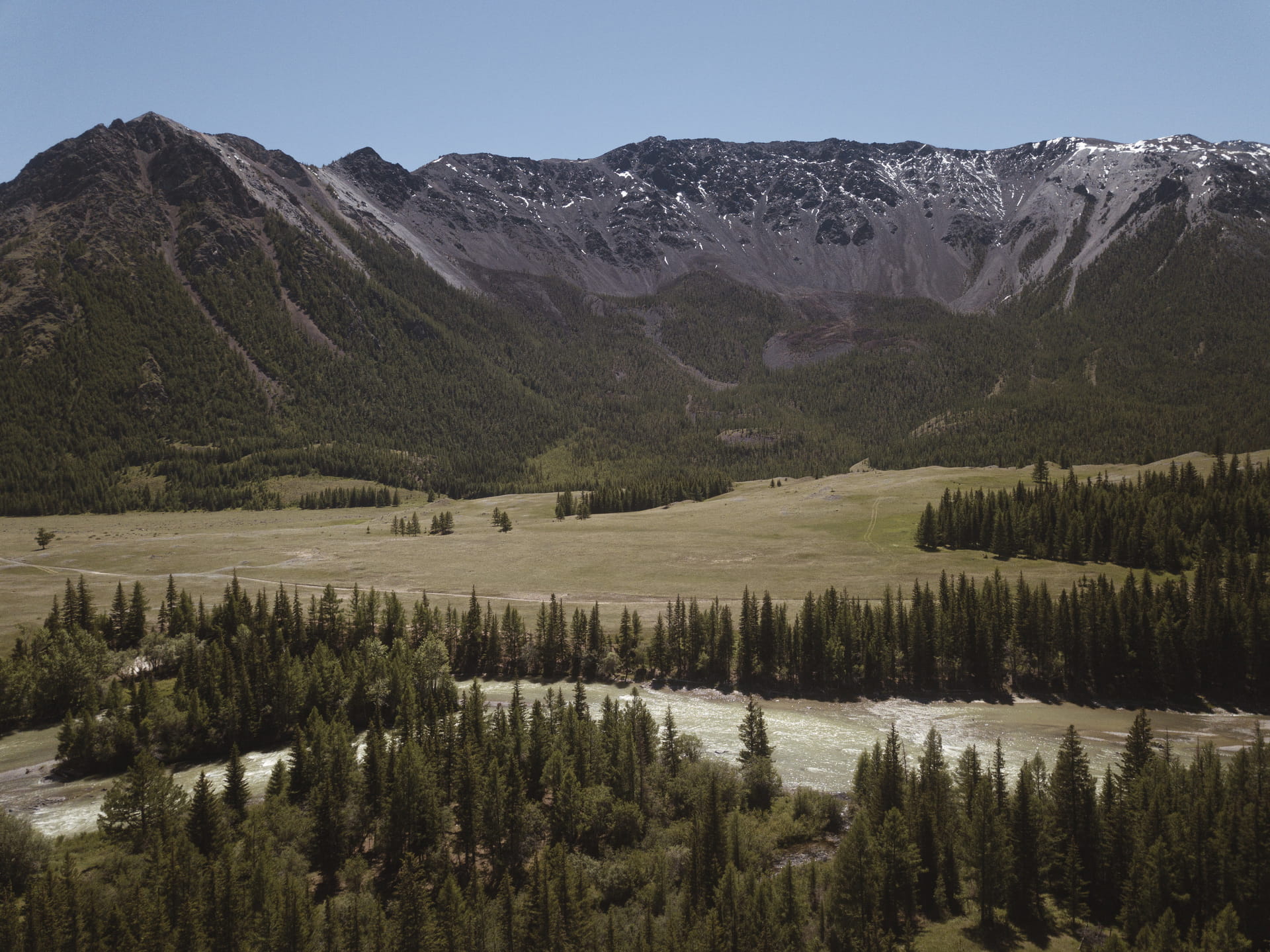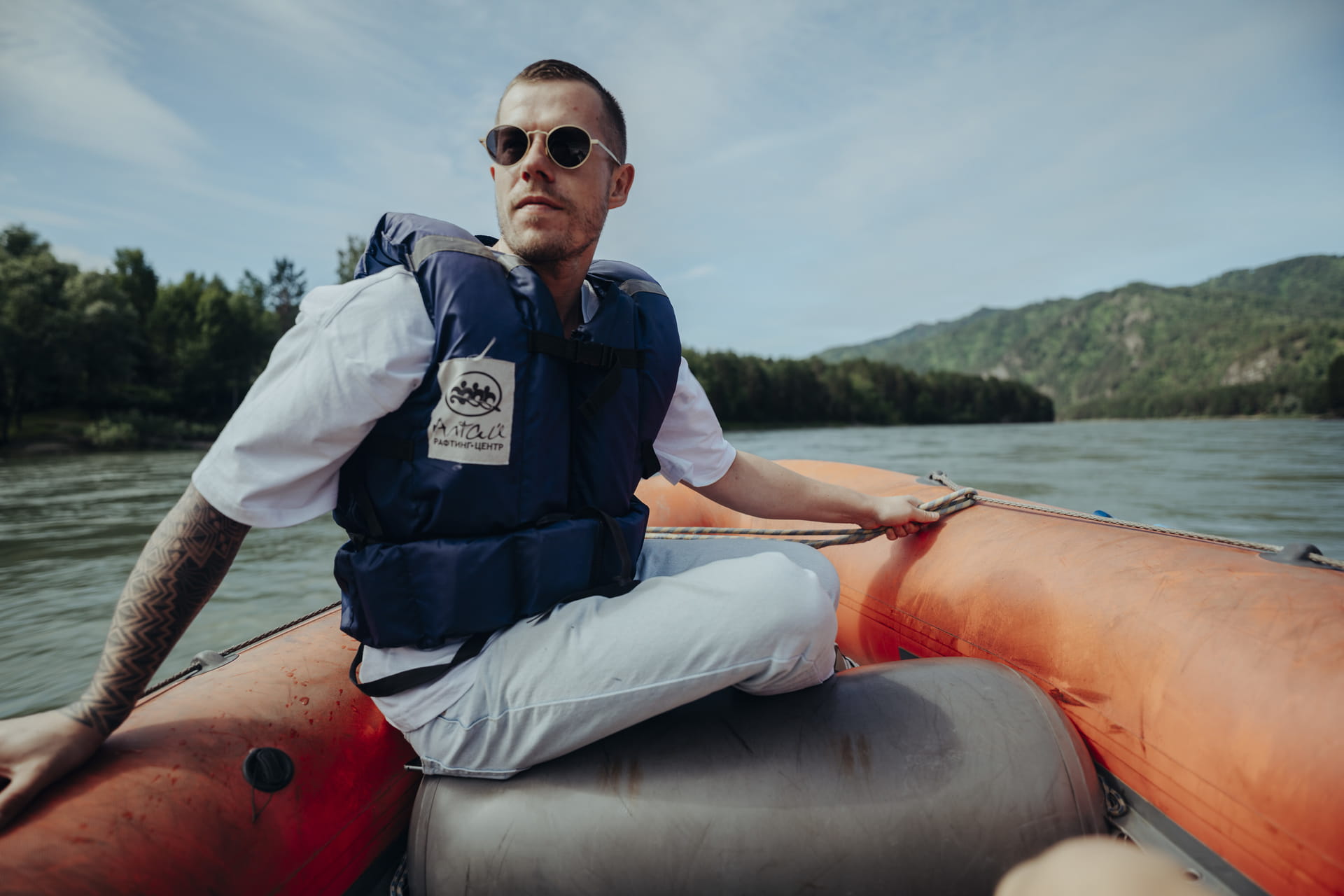Travels
Road Trips
Where the real Altai starts, shopping ends, and where they serve the best manty in the country.
Once home to ancient caravan routes, these parts have witnessed Russian merchants carry their goods down a steep mountain trail from the Mongolian border, and the defeated White Army retreat along a barely visible cart road. Today, the even asphalt serpentine of the longest Russian trunk road, that stretches 1,000km from Novosibirsk to Tashanta and links Russia with Mongolia, exudes more zen vibes than thrills. But the route through two mountain passes running hundreds of kilometres that gradually, bend by bend, spirits you away from civilisation and into the desert, can become a journey into the depths of your inner peace. As Pyotr Vail astutely pointed out in his essays on the lost homeland, ‘Old Believers, sect members, and cossacks fled to these parts.
It may be important: they did not come here per se, rather they took cover, went to ground here.
Perhaps that is why, even to this day, one can sense a certain disconnection between nature and people that inhabit it.’


Towards the Seminsky Pass
The first thing to do upon embarking on the winding path towards Mongolia (and inner zen) is to sail down the river Katun, whose ever-changing waters turn outrageous emerald in the summer as if flirting with the lush foliage of age-old cedars and deciduous forests sprawling along the river banks.


Your next stop should be by the Tsarskaya Okhota tourist camp, where a pedestrian suspension bridge will take you down a narrow footpath leading up to a 12-metre tall cascading Kamyshlinsky waterfall. Then swiftly jump back into the car and step on the gas all the way through to the Seminsky Pass. It is believed that, once you reach the end of the pass, you leave behind the Altai that is relatively kempt and thoroughly trampled by careless tourists, and enter the real Altai, spontaneously powerful and energetically charged, boundless and rootless.
Take your time on the observation deck at the foot of the mountain, and set out on your drive: a 9-kilometre ascent and an 11-kilometre descent. Whilst bends in the road are smooth and mobile coverage stable, local weather conditions are harsh – snow in July is a regular occurrence. To the left of the main track, a rocky gravel road runs towards the Sarlyk mountain, the highest peak (at 2,507m) of the Seminsky ridge as well as the Chuya Highway.
In places, it is nearly unpassable by car but the wild allure of these views and the absence of fussy tourists, deprived of the French Riviera this summer, will compensate for an effortless crossing of the Sarlyk mountain towards the Tuyuk lakes.
Life Hack
Altai’s infrastructure away from touristy Manzherok doesn’t offer much choice, but those who go along with it will not be disappointed. You can get lunch at Barsugan, a roadside motel with a cafe that serves simple home-cooked meals: a variety of pies and appetizers, and excellent hearty lagman. If it’s traditional Altai fry bread and manty that you’re after, pay a visit to Katyusha cafe in the village of Khabarovka. After lunch, check out the nearby market stalls for authentic souvenirs: take a closer look at those camel wool socks, they are likely to come in handy very soon.


The Chike-Taman Pass
The second mountain pass on the itinerary, Chike-Taman – which translates from Southern Altai as ‘flat sole’ – is not as high up as the Seminsky Pass (only 1,295m tall), but is way more spectacular and breathtaking with its forty-three bends. A cart road with thirty-four steep and dangerous bends ran through Chike-Taman until the beginning of the 20th century; you can still spot it through lush greenery from the observation deck off the modern road. The roadside souvenir market boasts a variety of cedar wood knick-knacks and Mongolian snacks with blood sausage at the helm – don’t be shy and grab whatever you like, you won’t get another chance at shopping in Altai anyway.


















 7 min
7 min